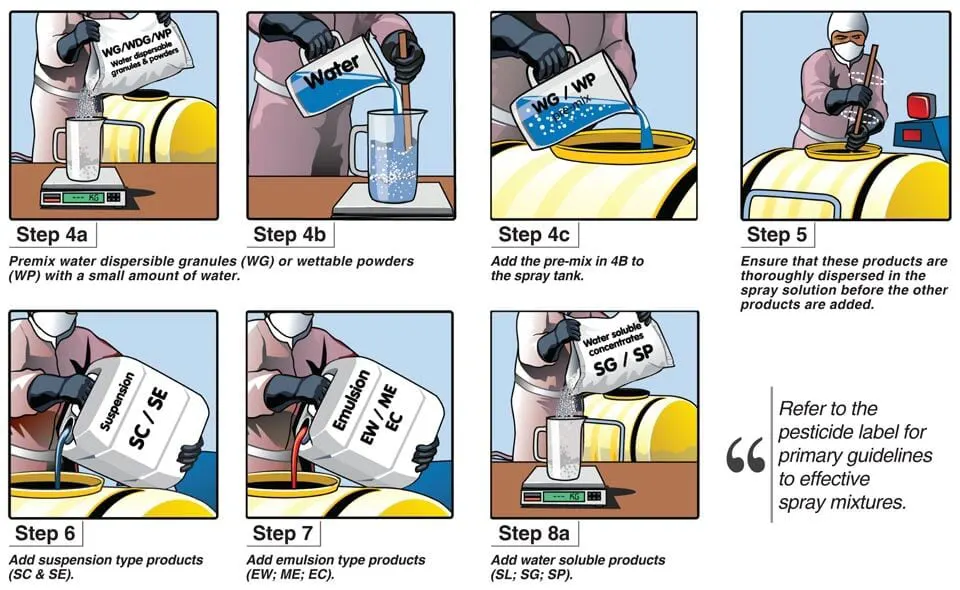Viewpoint: What is a ‘pesticide prescription program’ — and is it a better option than many chemical regulations?
Viewpoint: What is a ‘pesticide prescription program’ — and is it a better option than many chemical regulations?


The public worry about residues in food. They are concerned about harming non-target flora and fauna. They worry about the long-term effects on the environment. They question the approval process. Most troublesome is that many question a farmer’s need and use of pesticides in the first place.
Public pressures prompted a 1998 study by 10 agricultural scientists and legal experts who presented a position paper to the Council for Agricultural Science and Technology (CAST) looking at the feasibility of transforming pesticide use to a prescription-type system.
Just like the label on drugs at the pharmacy, a pesticide checklist would provide all the pertinent information for its safe and effective use.
Not only would farmers benefit from clear and precise instructions, manufacturers would have fewer questions from frustrated farmers. Retailers would have fewer complaints about product failures.
Their thinking is that the public is more accepting of the medical system where low-risk products can be self-prescribed, but high-risk drugs must be prescribed by licensed professionals.
The study concluded that adopting a medical-type system for prescribing pesticides may ease public concern about their environmental risk and safety. It may even prevent the loss of some high-risk pesticides.
However, it would require establishment of a new level of qualified personnel, which could add significant costs. The authors said these costs would need to be further evaluated before such a practice would be implemented.

Farmers do not need a pesticide prescription process with all the associated bureaucracy and cost to ensure human and environmental safety. But they do need easily accessible, detailed and concise information.
Instead of ignoring the calls by the public for more regulation of pesticide use and then complaining and resisting those regulations when governments impose them, it’s time for farmers to take a proactive approach and tell the public, governments and industry that this is the information we need from retailers and manufacturers to make better and safer use of the pesticides we need to keep putting food on consumers’ plates.
This is an excerpt. Read the original post here.

 | Videos | More... |

Video: Nuclear energy will destroy us? Global warming is an existential threat? Chemicals are massacring bees? Donate to the Green Industrial Complex!
 | Bees & Pollinators | More... |

GLP podcast: Science journalism is a mess. Here’s how to fix it

Mosquito massacre: Can we safely tackle malaria with a CRISPR gene drive?

Are we facing an ‘Insect Apocalypse’ caused by ‘intensive, industrial’ farming and agricultural chemicals? The media say yes; Science says ‘no’
 | Infographics | More... |

Infographic: Global regulatory and health research agencies on whether glyphosate causes cancer
 | GMO FAQs | More... |

Why is there controversy over GMO foods but not GMO drugs?

How are GMOs labeled around the world?

How does genetic engineering differ from conventional breeding?
 | GLP Profiles | More... |

Alex Jones: Right-wing conspiracy theorist stokes fear of GMOs, pesticides to sell ‘health supplements’




 Viewpoint — Fact checking MAHA mythmakers: How wellness influencers and RFK, Jr. undermine American science and health
Viewpoint — Fact checking MAHA mythmakers: How wellness influencers and RFK, Jr. undermine American science and health Viewpoint: Video — Big Solar is gobbling up productive agricultural land and hurting farmers yet providing little energy or sustainabilty gains
Viewpoint: Video — Big Solar is gobbling up productive agricultural land and hurting farmers yet providing little energy or sustainabilty gains Trust issues: What happens when therapists use ChatGPT?
Trust issues: What happens when therapists use ChatGPT? Fighting deforestation with CO2: Biotechnology breakthrough creates sustainable palm oil alternative for cosmetics
Fighting deforestation with CO2: Biotechnology breakthrough creates sustainable palm oil alternative for cosmetics California, Washington, Oregon forge immunization alliance to safeguard vaccine access against federal undermining
California, Washington, Oregon forge immunization alliance to safeguard vaccine access against federal undermining 30-year-old tomato line shows genetic resistance to devastating virus
30-year-old tomato line shows genetic resistance to devastating virus The free-range chicken dilemma: Better for birds, but with substantial costs
The free-range chicken dilemma: Better for birds, but with substantial costs ‘You have to treat the brain first’: Rethinking chronic pain with Sanjay Gupta
‘You have to treat the brain first’: Rethinking chronic pain with Sanjay Gupta
